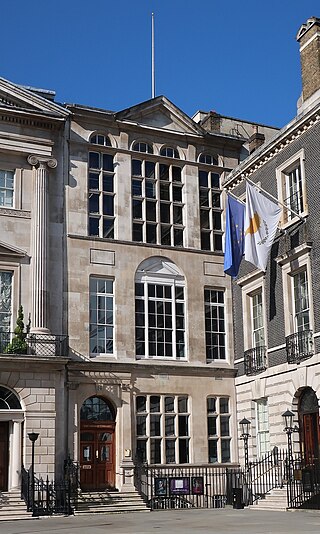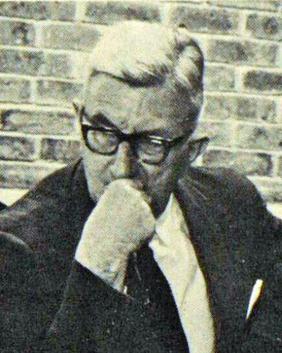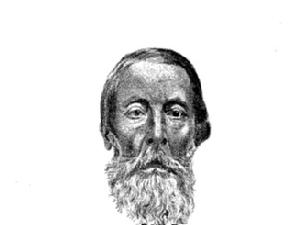
The British Museum Reading Room, situated in the centre of the Great Court of the British Museum, used to be the main reading room of the British Library. In 1997, this function moved to the new British Library building at St Pancras, London, but the Reading Room remains in its original form at the British Museum.

A library catalog is a register of all bibliographic items found in a library or group of libraries, such as a network of libraries at several locations. A catalog for a group of libraries is also called a union catalog. A bibliographic item can be any information entity that is considered library material, or a group of library materials, or linked from the catalog as far as it is relevant to the catalog and to the users (patrons) of the library.

Seymour Lubetzky was a major cataloging theorist and a prominent librarian.

The London Library is an independent lending library in London, established in 1841. It was founded on the initiative of Thomas Carlyle, who was dissatisfied with some of the policies at the British Museum Library. It is located at 14 St James's Square, in the St James's area of the City of Westminster, which has been its home since 1845. Membership is open to all, on payment of an annual subscription, and life and corporate memberships are also available. As of December 2023 the Library had around 7,500 members.

A national library is a library established by a government as a country's preeminent repository of information. Unlike public libraries, these rarely allow citizens to borrow books. Often, they include numerous rare, valuable, or significant works. A national library is that library which has the duty of collecting and preserving the literature of the nation within and outside the country. Thus, national libraries are those libraries whose community is the nation at large. Examples include the British Library in London, and the Bibliothèque nationale de France in Paris.

Matteo Maria Boiardo was an Italian Renaissance poet, best known for his epic poem Orlando innamorato.

Richard Garnett C.B. was a scholar, librarian, biographer and poet. He was keeper of printed books at British Museum from 1890 to 1899.

Sir Henry Ellis was an English librarian and antiquarian, for a long period principal librarian at the British Museum.

In library and information science, cataloging (US) or cataloguing (UK) is the process of creating metadata representing information resources, such as books, sound recordings, moving images, etc. Cataloging provides information such as author's names, titles, and subject terms that describe resources, typically through the creation of bibliographic records. The records serve as surrogates for the stored information resources. Since the 1970s these metadata are in machine-readable form and are indexed by information retrieval tools, such as bibliographic databases or search engines. While typically the cataloging process results in the production of library catalogs, it also produces other types of discovery tools for documents and collections.

Lelio Orsi, also known as Lelio da Novellara, was a Mannerist painter and architect of the Reggio Emilia school in northern Italy.

The Duchy of Ferrara was a state in what is now northern Italy. It consisted of about 1,100 km2 south of the lower Po River, stretching to the valley of the lower Reno River, including the city of Ferrara. The territory that was part of the Duchy was ruled by the House of Este from 1146 to 1597.

William Richard Hamilton, FRS, was a British antiquarian, traveller and diplomat.
Edward Edwards (1812–1886) was a British librarian, library historian, and biographer. He was an important figure in the establishment of free libraries in the United Kingdom. He died and is buried in Niton on the Isle of Wight.

Sir Frank Chalton Francis was an English academic librarian and curator. Almost all his working life was at the British Museum, first as an Assistant Keeper in the Department of Printed Books, and later as Secretary of the museum, Keeper of Printed Books and, from 1959 to 1968, Director and Principal Librarian of the museum.

John Winter Jones was an English librarian. He was Principal Librarian of the British Museum between 1866 and 1873. He was the first President of the Library Association in the U.K.

The British Museum Library: A Short History and Survey is a book by Arundell Esdaile published by George Allen & Unwin, London, in 1946. It was reprinted in 1979 by Greenwood Press, Westport, Conn. from the 1948 ed. published by G. Allen & Unwin, London, which was issued as no. 9 of the Library Association series of library manuals. Esdaile's book serves as a historical survey of the British Museum Library when the museum and library departments were housed in the same building. The book traces the entire history of the institution, from 1753 to 1945.

Dr. Andrea Crestadoro (1808–1879) was a bibliographer who became Chief Librarian of Manchester Free Library, 1864–1879. He is credited with being the first person to propose that books could be catalogued by using keywords that did not occur in the title of the book. His ideas also included a metallic balloon, reform of the tax system, and improvements to a railway locomotive – the Impulsoria – that was powered by four horses on a treadmill.

Louis Alexander Fagan was an Anglo-Italian writer and artist. He worked in the Department of Prints and Drawings for the British Museum from 1869 to 1894, and wrote various books on the department. A painting of him by John Singer Sargent sold at auction for $118,750 in 2020.

The Galleria Estense is an art gallery in the heart of Modena, centred around the collection of the d’Este family: rulers of Modena, Reggio and Ferrara from 1289 to 1796. Located on the top floor of the Palazzo dei Musei, on the St. Augustine square, the museum showcases a vast array of works ranging from fresco and oil painting to marble, polychrome and terracotta sculpture; musical instruments; numismatics; curios and decorative antiques.
The following is a timeline of the history of the city of Reggio Emilia in the Emilia-Romagna region of Italy.




















